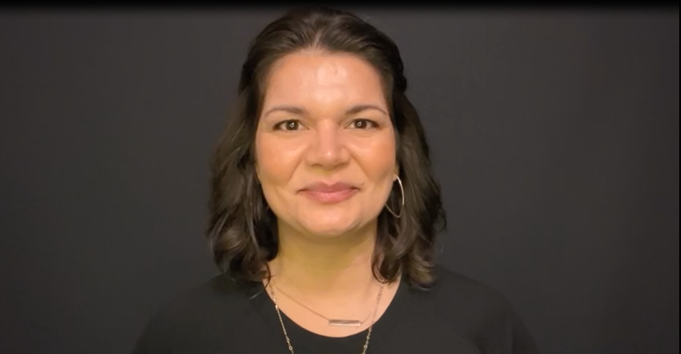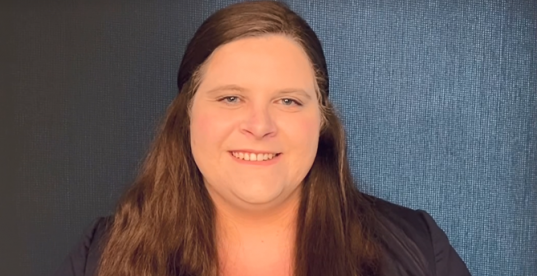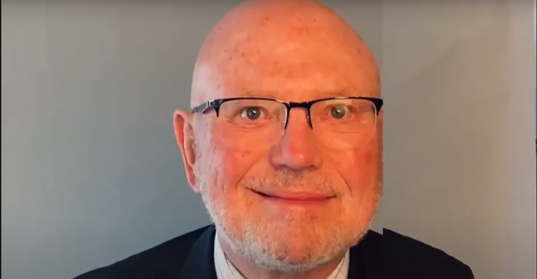Hiring. The one process every organization has in common, regardless of industry. It points to an ongoing human capital supply and demand equation: companies need people and people need jobs! It seems like a simple formula to solve, right? Well, not always. The world of work as we know it is ever evolving, and new recruiting challenges continue to impact companies and their ability to secure great talent. Let’s examine a few ways that can help you stand out from the competition and enhance your hiring methodology:
1. Create a Recruiting Strategy that Promotes Transparency
All recruiting starts with simply determining that a hire need exists. But the reasons why that need exists can vary greatly depending on where your business sits. Is this a replacement or a new position that needs to be filled? Is the work expanding in a department or do you need to truly create a new role for your business? There are a lot of decisions that are often made quickly in planning for a hire. But before you post that Indeed ad, it is important to make sure everyone is aligned with the role you are trying to fill and that all involved have put in the proper prep work. Gain total team agreeance on the job description and duties. Sometimes that means creating a job description from scratch or entirely reformatting a description to update with what a role truly encompasses. Also, make sure the budget is agreed upon in advance to assure the hiring process will not be held up later. Once this is all confirmed, communicate transparent information with those involved in the hiring process – manager and candidate alike. Sharing details about the role, the expectations and the impact can all go a long way towards assuring synergy in your hiring process.
2. Enhance Employer Branding
Once you have really mapped out the role and responsibilities, the next step is to advertise to the market and let prospects know you are ready to make a hire. The big challenge here is that barring a few niche role exceptions, you likely aren’t the only employer seeking talent with the advertised skills. So, how can you stand out? Understand that many employers will simply just “go through the motions” of posting a job on a job board with just a copy of the job description. The revelation here is that a job description and a job posting should be classified as two separate things altogether. A job description is a formal document created for HR to outline the essential functions of a position. A job posting is an advertisement that should seek to accomplish at least three things. First, it should share the critical details of a job description in an easy-to-read summary. Secondly, it should provide compelling reasons for a candidate to consider the job and speak to what it could mean for their career. Finally, it should mention the value proposition of why they would want to work for the company, and what makes that company unique and the opportunity exciting. Partner with marketing and center a talent community and outreach campaign around testimonials, accolades, activism, culture and other relevant company content that highlights your organization. Focus efforts on the selling points of why someone should consider that job and your organization, and you start the candidate conversation with a sincere and welcoming invitation. Don’t forget to include the diversified audience in your messaging. Helping a candidate learn what your company and culture is about through various channels in advance will ultimately lead to better, more informed hires.
3. Maximize Recruiting Steps
When it comes to recruiting steps, companies should have two goals in mind – 1) Evaluate the candidate and their capability to fit in with a team and perform the job. 2) Provide the candidate appropriate exposure to the business, team and culture through a positively enacted candidate experience. Companies can drastically vary their hiring steps as a candidate moves from an applicant to a hired employee. While the perfect number of recruiting steps may differ by organization, the goal should always be the same. Recruiting steps should be meaningful, have intentional results and be executable in a reasonable amount of time. Work closely as a hiring team to outline your process. No more. No less. Receive buy-in from the team and think through steps that are most critical, so everyone is aligned. Maybe the process is to have intensive in-depth one on one interviews with technical candidates. Or maybe the best process for a hospitality role is to bring in every candidate that passes a phone screen for a panel interview and pick the top choice that same day. You also want to make sure you are thinking about DE&I in your recruiting steps. Are you being inclusive in how you recruit? Are you making an effort to remove unconscious bias? Also, be sure the interview steps align with business needs. In some cases, virtual interviews can expedite the process or work better for a business, but in other cases this may not make sense. We have clients in service industries that prefer all the interviews to take place offsite except for the final interview. Other clients in the manufacturing industry quickly prefer to bring candidates onsite to preview the environment and interact with the team. How many steps should you have? My general rule of thumb is, less is better. This helps for a better overall candidate experience and timelier hire. Start with three basic recruiting steps- a phone interview, an in-person interview, and a final interview. From here additional steps or proficiency assessments can be woven in if it is deemed that they add value.
4. Purposeful Interviews for Better Comparisons
Hiring manager interviews are always a work in progress across industries. At one extreme companies adopt the same set of questions for all roles, while others have absolutely no guidelines in for the interview process and related questions. Some companies are reinventing the wheel every single time. Recruiting and HR teams are often asked to step in and streamline which questions will be used in an interview and assist in analyzing the candidate response to those questions. One school of thought offers that interviews only present a 6% effectiveness in determining whether a candidate is a right match for the role. Others believe interviewing helps break the ice and reinforces the compatibility of a candidate’s personality and skillset with their potential future role. I personally believe a combination of both objective and subjective question sets with added behavioral based questioning is the best interview formula for decision making. Evaluate what the candidate has done recently, why they are interested in the role, and move into matching the checklist of requirements to their background. Next, utilize situational questioning to help understand a candidate’s work logic, how they react and how well they can communicate. Before interviewing begins for the position, standardize the list questions you will ask to all candidates. This sets up a consistent comparison. In the pre-work, think ahead as needed and customize questions to align with each role. You can’t fit everything into a box, so don’t try to. You need to ask different questions for a marketing candidate versus an accounting candidate. Do get ahead of important things like salary requirements, experience and credentials, along with education verification. Do not go off script and find yourself in a position of bias, asking questions not pertinent to the hiring decision, or infringing on protected classes. Make sure hiring managers are well trained in the interview process.
5. Elevate the Candidate Experience
Hiring an employee is a process! And that process isn’t just felt by the hiring team, it’s also felt by the candidate. It is important to recognize that the candidate’s first impression starts with the moment they click on the job advertisement and continues throughout the entirety of the interviewing and hiring process. While you are evaluating a candidate, they are simultaneously evaluating you. Was the application process simple? Are you prompt in your response? If you promise to get back to them by Tuesday, are you following through on what you say? If you agreed to chase down that specific business statistic the candidate asked about in the interview process, did you circle back and provide it? This is all part of the candidate experience. Some companies leave quite a good impression in this arena. Others, not so much. There is always room for improvement. I believe the candidate experience to be an important part of the recruiting process that should be consistently evaluated and tweaked accordingly. Consider this, you have a candidate that believes in your company and is impressed by the recruiting process and all interactions along the way – they are much more likely to accept your competitive offer versus others. Candidates are pursuing more than just the highest potential salary, they want to feel an honest and trusting connection to their prospective employer. News flash – This is about building an employee relationship from ground zero.
6. Trust in the Selection Process
What makes a good employee? How do we know we are making the right hire? This decision often detracts and haunts many hiring managers in their pursuit of finding the “perfect” hire. We refer to this as “the search for the purple squirrel” or “unicorn.” The reality is, you never really find the purple squirrel, and anyone that tells you that they can find them may spend their spare time selling snake oil. Hiring is complex because of one thing – you are dealing with humans. Humans have good days and bad days. They can make good choices or poor choices. No two are alike. You can objectively judge someone’s experience on paper, but once you throw in the humanity ingredient the dish will be different every time. It is impossible to not accept level of assumed risk and trust when hiring someone. In the final selection, what we are ideally looking for is the best possible match for your position and culture. This is a combination of finding the right experience, skills, potential, personality attributes and team compatibility a candidate demonstrates. If we are doing this right, we are evaluating from the moment we first see the candidate’s resume throughout the interview and assessment process, all the way up to the final conversation. The structure of your process will drive your hiring success. You set your bars and criteria along the way. Provide opportunity for candidates to demonstrate their abilities and capabilities to the hiring team. Trust the process and the best candidate will ultimately emerge.
Effective recruiting is all about gauging the success of the process you put into place and the hires you have made. These six areas of optimization help shape a framework towards better effectiveness and better outcomes in the long run. However, putting an effective recruiting process in place takes time and requires constant nurturing. As you work to make improvements remember these tips: Never rush your decisions. Trust and accept the process. Be consistent until the end. And always remember, hiring isn’t the same as deciding a lifelong marriage. No one has a crystal ball into the long-term viability of a hire and rarely in today’s work world do people remain in a position or with one company for the life of their career. Hiring should always be a decision made to positively fuel the immediate needs of the business. Once you get that great hire in the door, then the real work starts! Retention.
By John Coffee IV
As Hanna Resource Group’s Director of Talent Acquisition, John brings over 15 years of experience in the talent industry with specialties ranging from acquisition, outsourcing, staffing, recruitment, and more. Prior to HRG, John achieved success as an Implementation Leader and as a Senior Talent Acquisition Business Partner for over 7 years with ManpowerGroup, driving talent acquisition initiatives across multiple lines of business from mid-level to C- suite throughout the US, Canada, Mexico and other global markets. John takes pride in his ability to optimize technology and provide insight into market and competitive intelligence in the recruiting space. He has deep exposure working across a wide range of recruitment technology including CRM, ATS and VMS tools in various sized companies. He is relentless in his pursuit to enhance ROI on talent investment and has dedicated his career to finding the right people, for the right job!

JOHN COFFEE IV, MBA
Director, Talent Acquisition – Technology
john@hannaresource.com
859.406.4338








